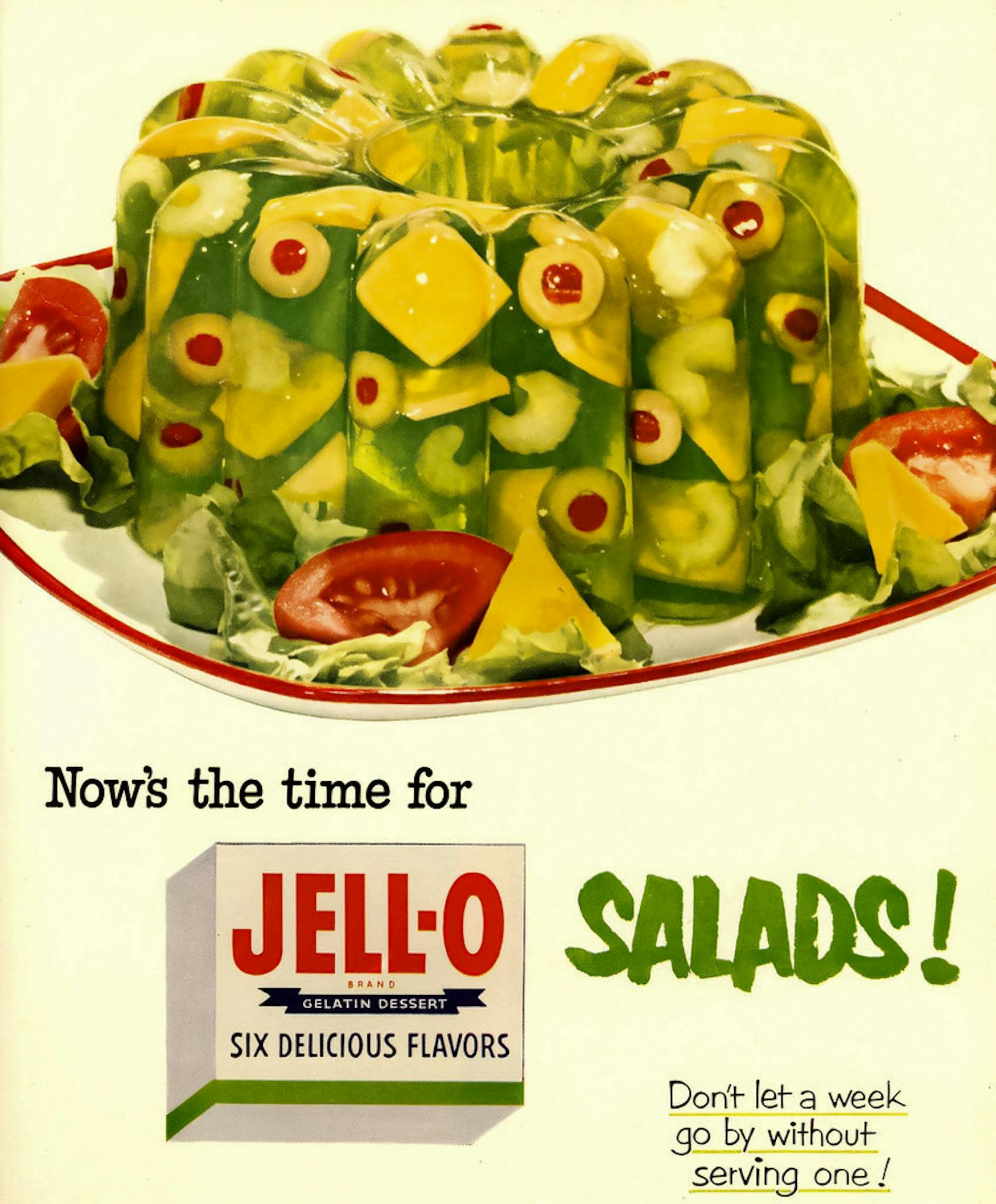Is Jello an art? An exhibit explores media and life through this gelatinous treat.
When walking through the Museum of Fine Arts, I was shocked to see the word “Jello” across a wall next to a small room, and I couldn’t help but venture in. Sometimes curiosity kills the cat, but in this instance the cat gained some perspective. The exhibit “Digital Iridescence: Jell-O in New Media” is unlike any other that I have seen and proves why I continue to venture across the city and explore museums.
This exhibit opened with a lesson on the history of Jello as a product, providing context for the art that is going to be seen. This food has been around for over a hundred years, being especially popular in the early twentieth century but still seen in kitchen cabinets across the country. Jello has also had very impactful advertising campaigns, known as “America’s most popular dessert.” As this exhibit demonstrates however, it has so much merit beyond just being a dessert.
This exhibit is an interactive experience, utilizing multiple senses — not something that is usually seen in a fine-arts setting. The work displayed is representative of five different contemporary artists, all connected by the common theme of Jello.
Sharona Franklin is a self identified “writer, sculptor and activist” that took part in this exhibit. She referred to the gelatin sculptures shown as an element of the video she presented as “bioshrines, highlighting their dual roles as living organisms and sacred objects in her treatment of chronic illness and disability.” She works with many mediums and in many forms but loves edible sculptures due to the fact that they can be enjoyed in multiple capacities by many people. I think that this is a great example of art transcending traditional boundaries and bringing individuals together.
Franklin finds much meaning in the Jello, stating that she “understands the materials because [she] understands the conditions of the body which are sensitive.” Working with these Jello sculptures requires precision in terms of both heat and ice, both are aspects that are utilized when treating chronic illness. Franklin is most known for her Instagram account @paid.technologues, where she explores the intersection found in encapsulating elements of nature in Jello, representative of fragility and connection. I have never seen anything like this page before and was immediately captivated by the intricate details of these miniature gelatin gardens. She has built a platform surrounding the intersection of art and disability, and her passion really came through when watching her video at the MFA.
The video created by Alison Kuo, explores the “sacrifice, sensuality and aspiration contained in gelatin’s material and social histories.” As seen on her website, Kuo has done much research regarding the history and past usage of gelatin, a substance that was created to aid wartime rationing and has since developed a popular counterpart of slime.
“The New Joys of Gellies” demonstrated Kuo experimenting with texture and sound, merging “the aesthetics of ASMR and experimental sound art.” She had no hesitation diving right in and touching the substance in a myriad of ways. Her video at the MFA was better watched with headphones, creating an immersive experience. I was both amazed and disturbed when listening, as the ASMR that I have seen on the internet is meant to have a calming effect on the audience. I did not find this video experience calming, but it was oddly intriguing. I had no idea Jello could make so many different sounds and take on so many different textures. It was mesmerizing.
Katherine Mitchell DiRico displayed a piece of work called “hylomorphism” within this exhibit — my personal favorite of the five showcased artists. This was made up of a projection that has multiple different layers due to fabric. The projection is a close up of holographic looking Jello, and spectators travel through the projection, and it comes to life around them. I visited with my family and we had a great time, feeling like we were a part of the art and taking pictures of each other covered in Jello. I think that this is an aspect of the exhibit that you don’t even have to be an art lover to appreciate — it would be fun for anyone.
The final two artists to show art were Kelly Chen and Maisie Cousins. Cousins used photography as a discipline to comment on the resilience of Jello, showing it still intact at the scene of a car crash. I think that it is deeply concerning that this is something we often consume, especially in hospitals. If it can’t be destroyed in a car crash, how can we digest it? This photography was a powerful addition, being the piece of the exhibit that I noticed gained the most prolonged attention. Many stopped to take it in, even though it was by no means the flashiest, biggest or brightest thing on display.
I had no idea what to expect when walking into this exhibit, and I have to say that I would recommend a visit. While definitely nontraditional, this exhibit, on display until mid march, was indeed life changing. I found it fascinating to take something seen in daily life and explore it in a myriad of different ways with many different perspectives. Looking at life through a different lens is never a negative, even if it is maybe a little avant garde for the tastes of most.



Please note All comments are eligible for publication in The Justice.